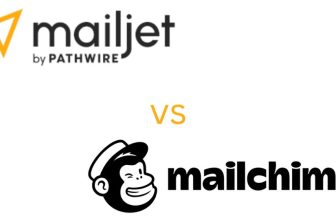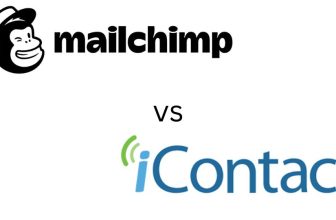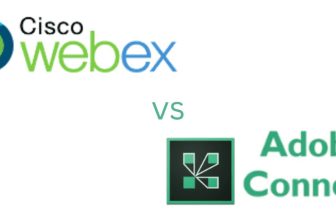
Demand for video collaborations for corporate purposes may be seen growing globally, indicating an increased expansion of this industry shortly. Virtual events are a new reality, and videos are selling well in this context. Buyers anticipate a response within 10 minutes of making a question, which may be readily addressed with the click of a button on your website.
Even in this day and age of anonymous digital contacts, clients and internal stakeholders are beginning to see the value of video conferencing. Why should you put video calling on your website if the video is so vital to your business? How might video chat help your company’s communication? How difficult is it nowadays to implement this functionality such that it functions well from any browser or mobile device?
Enterprise Video Conferencing – Best Guide.
Best Video Conferencing for Small Businesses.
In this post, we will look at how to integrate video conferencing into website may help your business and how you can quickly incorporate this technology into your present application or website.
A Quick Overview of Video Conferencing Technology
You would have attended several sessions at this point even if you were not physically present in a specific meeting place. So, you’ve definitely used a video-conferencing program before! This technique uses an application to link two or more guests in separate places.
Video conferencing API also provides high-quality audio and video experiences as well as a plethora of other user-friendly features for clear communication and attendee engagement.
Why to Integrate Video Conferencing into website?
From a marketing standpoint, video conferencing is very popular and trending. According to Cisco during the last five years, internet video traffic has grown by 26% annually. For your clients, video chat is what meets the urgency of their needs. Everything is instantaneous today at the push of a mouse. Customer patience is low, and they base their choice of goods and services as much on your responsiveness as they do on the caliber of your offering.
HubSpot finds that 82% of buyers and 90% of current customers say they anticipate a response within 10 minutes to their service query. Two-thirds say waiting on hold for a response and then having to clarify their demands, often repeatedly, to different customer care people is a big irritation.
When businesses include video calling on their website, it adds a customized touch of immediacy to their prospect and customer engagements. This has the potential to improve both conversion and retention rates. This two-way virtual communication minimizes mistakes in understanding a client’s particular pain areas, and it may help long-term sales efforts by better educating prospects on marketing points and providing a better atmosphere for closing business. It also generates more of a social touch with customers, appealing to them to buy, or buy more, over time. Simply said, it’s more difficult to say “No” to someone when you’re staring them in the eyes.
These tools can also be used for corporate webinars to establish your company as a thought leader, how-to tutorials to teach and upsell clients, and even as part of the hiring process to attract the best talent.
Integrate video conferencing into website to enhance functionality
But introducing video conferencing to your website also has benefits for your internal stakeholders. According to studies, video conferencing makes 87% of distant teams feel more connected to a business. How many times has an email been misconstrued with an unintended tone, causing problems inside teams? The same issue arises in instant messaging and, without a doubt, in texting. This is especially important when working with clients but also when communicating with remote team members. Remote teams encounter obstacles internal teams do not.
Communication can be disrupted, despite our best efforts to connect. However, when a video is not used, the context of facial expressions is lost. Unfortunately, connectivity issues with commercial services such as Google Hangouts and Skype can be much more frustrating. To connect, respond, and improve your relationships with all of your internal and external customers, integrate video calling directly into your website.
How to Integrate Video Conferencing into Website?
Integrate video conferencing into website to boost customer and internal team communication. When using web-based video calling, sophisticated application program interfaces (APIs) enable these tools by permitting interactions with third-party interfaces.
Group calling, screen sharing, smart presenting, and other video chatting and conferencing services may be added to your website in minutes. To set up basic features, the top video conferencing systems include self-help tutorials that do not require programming knowledge.
Some services, however, need the installation of a developer. Although video conferencing systems are designed to be readily integrated with a wide range of applications, it is always advisable to seek the assistance of an expert developer.
The following is a basic example of utilizing video conferencing with Javascript to start a conference from a button click, and then provide a link to join the meeting. We’ll show the important aspects, as well as the optional items we’ve done to create a complete, functional example:
Observations about this sample function:
- Step 1: Each meeting established on your account must have a distinct name consisting of three or more characters. To achieve the best results, your application should include some mechanism for ensuring that the meeting name is unique before calling the function. Otherwise, additional error handling may be required for this scenario. For example, you may use moment.js to produce the current date and time, and the meeting name is a beautifully formatted representation of the current date and time.
As a result, each time we load this page, the unique timestamp acts as the meeting name. This works fine in this example, but in your application, you may want to utilize more recognized meeting names, such as data from a form input, CRM, and so on.
- Step 2: The scheduled Date Time and scheduled Time Zone properties are recommended to ensure that the meeting is properly recorded in your account. They must be specified as strings, as follows: scheduled date time: “Fri Jan 17, 2020, 13:00:00 -05:00” scheduled Time Zone: “EST/UTC-05:00”. The time and time zone are essential for the Calendar and Email Invitations to show properly. For example, you can utilize moment.js to produce the current date and time and format it to meet the specifications. Your application most likely includes its context for the meeting date and time (such as a list of time slots/availability). We strongly advocate utilizing moment.js or anything similar for simple formatting, regardless of the date and time:
- Step 3: The JSON-formatted response to the GraphQL API server may include variables. We advise testing the different API from your account’s API playground first to gain a concept of the accessible schema. Once you’ve mastered GraphQL, it will be simple to construct the request body for numerous API calls. To begin, you must first generate an API token by entering into your account and visiting the API area. To authenticate all requests, your token must be included in the payload.
- Step 4: When the API is successful, it returns the new meeting ID. Depending on your application, you may want to save this for later use or use it right away. The most common application is to create the full URL to attend the meeting.
This URL is made up of:
- Your account’s Address
- /meeting/ path
- id of the query string
The URL may also accept two more parameters:
- name
- go
The name argument may be used to preload the user’s name who will attend the meeting. If no name is specified in the URL, the user will be asked to enter it when they join the meeting.
For instance, &name=John
If the name argument is specified, the go parameter acts to bypass the guest landing page and join users straight into the conference. For instance, &name=John&go=1
- Step 5: For example, we can create a simple function that takes the result and extracts only the information we need: the meeting ID. We then create a clickable button (for this example) that will take you to the complete meeting URL.
- Step 6: If you’re looking for a video conferencing service to add to your website, seek suppliers who provide safe, encrypted technologies to protect the confidentiality of your conversations. Each online meeting should have verified end-to-end security standards, secure login with user credentials, secure meeting requests, and other features to protect the information flow between you and your clients.
How to include a video conferencing room on your website?
Step 1: Make a Room
- Create a conference room using Video SDK; the Server Application allows Video SDK to do so.
- Video SKD verifies credentials and sets up a room.
- Finally, a Room SID is returned, which may be used to perform API calls.
Step 2: Linking to the room
To connect with the session and govern the users, the meeting host can get an access token. It implies that only the host may invite certain individuals or groups to the session.
- The host can obtain the token from the application server without needing to provide credentials to the create session API.
- The access token is generated once the application server validates the Video SDK credentials.
- The host is granted access after verifying his or her credentials, and a connection bridge is formed between the meeting room session and the host.
Step 3: Visitors are welcome
- Hosts give the guest an invitation that contains the access token and meeting room details.
- The Authentication server validates the token’s authenticity after clicking or accessing the room with the token.
- Only after verification will the guest be connected to the session and added as a participant.
The Most Popular Video SDKs
Here is a handpicked collection of prominent video SDKs to choose from that are efficient, dependable, and secure – Amazon Chime SDK, MirroFly’s SDK, and Sinch. When integrating the video conferencing tool into your website or upgrading an existing one, using these SDKs will assure top speed and dependability.
- CONTUS MirrorFly
CONTUS MirrorFly is a real-time communication API and SDK supplier that caters to the demands of all types of enterprises. Yes, if you want to provide your video chat software with an endless number of voice chat, and video capabilities, you may do so. Furthermore, it is very adaptable and compatible with any iOS, Android, or web app.
It is a video conferencing system with several price options, including self-hosted, customized, and pay-as-you-go. MirrorFly’s well-structured command arrays allow users to have quick face-to-face contact via one-on-one and group video conferencing. CONTUS MirrorFly offers enterprise-grade security protocol safeguards as well as high-end encryption APIs across all chats, media, and video/audio files.
Features
- Video call (individual or group)
- Compatibility across platforms
- Sharing a Screen
- Live Streaming
- Mirroring video
- Connections to servers.
- ApphiTect Video Conferencing
Apphitech is a cutting-edge platform that provides video conferencing APIs and SDKs while also allowing businesses to brand their products. It employs several believable technological stacks to construct the answer in the manner desired. Appitech is a user-friendly video calling solution that is offered as both SaaS and SaaP, depending on the needs of the organization.
Apphitech allows you to construct completely functional video conferencing software that can be used in a variety of sectors such as healthcare, banking, eCommerce, and many more. That is done across platforms such as mobile and web apps in a very short period. Its UI kits and components include extensive data and backend security measures, ensuring a quick market entry.
Features
- Mute the call.
- Video conferencing (individual/group)
- Recording of the video sequence
- Option to Make a Video Call
- Reconnecting a Call
- Screen sharing in conjunction with media sharing
- Twilio Video Conferencing
Apphitech allows you to construct completely functional video conferencing software that can be used in a variety of sectors such as healthcare, banking, eCommerce, and many more. That is done across platforms such as mobile and web apps in a very short period. Its UI kits and components include extensive data and backend security measures, ensuring a quick market entry.
It is very capable of reaching you on your preferred channel at every stage of the customer’s journey. Twilio video conferencing APIs are fine-tuned to increase user engagement and loyalty, i.e., it will maintain the discussion spam-free without sacrificing quality. It also enables users to transmit data between devices in real-time.
Features
- Sharing a Screen
- Live Streaming
- Cloud Capture
- Integration of workflows
- End-to-End Security
- Performance across several platforms
- EnableX
EnableX is a platform for interaction that integrates live video, phone and chat APIs. It offers a carrier-grade, configurable solution with artificial intelligence that ensures safe corporate communication without the need for extra infrastructure.
It is equipped with a powerful video calling API, allowing you to integrate your chosen app or site in minutes. EnableX is driven by the world’s visual builder tools, which allow developers to create their UI with only a few clicks, drags, and drops.
Features
- Secure Video calling
- Complete encryption
- Control of floor access
- Entry is restricted.
- Room Lock
- The waiting room
- Agora
Agora is a real-time networking API with exceptional scalability. It supports real-time audio/video calls and lives interactive broadcasting. Agora is very interoperable with all major platforms and is mobile-friendly, consuming little battery power.
Their video chat APIs are simple to incorporate into any existing application, regardless of industry. It unifies operational challenges under a single roof, including comprehensive chat services as well as phone and video conferencing features. Furthermore, all calls made using the program are entirely encrypted to prevent hacking.
Features
- Noise cancellation drove by AI
- AI-powered supplemental services
- Screen Sharing
- Conferencing via video
- Chat in real-time
- Make a whiteboard
- BlueJeans
Traditional web conferencing software plays an important part in overcoming the challenges of fragmented systems, sluggish connection times, and pricey equipment. The rapid advancement of communication technologies has significantly raised the bar. This BlueJeans video conferencing system primarily delivers a high-tech, effective conference that allows attendees to focus on solving the most important concerns. With the assistance of this service, businessmen may deliver outstanding presentations.
BlueJeans may also provide a variety of services straight to your company. It can significantly decrease space and time constraints. The video conferencing API allows you to quickly interact with business partners, workers, and customers at any time.
Features
- Secure Video conferencing
- Complete encryption
- Control of floor access
- Restricted Entry.
- Room Lock
- Lobby
The Advantages of Integrating Video Conferencing Software on Your Website
- Boost the Digital Workforce: Video conferencing technology fosters a more collaborative meeting culture in your business while also laying the groundwork for continuous digital transformation and the future of work. Meetings through video conferences allow team members to retain personal relationships regardless of their physical location. This will accelerate the whole process, beginning with decision-making and increasing cooperation capacities and visibility for employees internationally.
- More interactive than a voice conference call: Typically, participants in phone call meetings do not feel linked to the other team members in the conference. As a result, people tend to zone out and begin multitasking. However, with a video call meeting, both workforce employees and remote workers are visible, which increases participation by providing better visuals and interactions among participants.
- It saves money on travel expenditures: Traveling not only increases company expenses but also takes time. We frequently see individuals traveling to different areas to attend conferences and business meetings, which may be avoided by using video conferencing technologies. Businesses may utilize the money they save on business travel to fund other company initiatives.
- Enhances Communication: According to the study, individuals digest visual information faster than text and music. As a result, when you have a business meeting through video, your guests will grasp it more efficiently and precisely than when you hold it via voice conferencing. For example, if the product can be viewed while being demonstrated or discussed, it will be more effective.
- Increases Productivity: When you need rapid answers and don’t want to wait for their response, instead of sending an email to your business partners, coworkers, or support staff, you may arrange a short video conference call with them! Simply connect through video conference and utilize the screen-sharing capability to proceed with fixing the difficulties.
The Difficulties in Integrating a Video Conferencing Web Application From Scratch
- Prolonged Delivery Times: Estimating the time it will take to build, test, and deploy a video call solution, especially one suited to your business’s needs, is difficult. It is common for delivery times to be extended, which raises manufacturing costs and adds expenditure on temporary applications.
- Operational Difficulty: The operational difficulty of building a video conferencing system from scratch has the potential to stall important business projects. Companies will be responsible for managing the complete infrastructure required to design, test, and launch the application. As a result, they put other services on hold, negatively impacting daily operations.
- Security Across Services: It is vital to develop video calling software with the highest level of security, especially for secret meetings and information sharing. You must verify that the application is completely encrypted and safe at both the user and database levels.
Given these possible obstacles, we may conclude that a pre-packaged video conferencing system may be the best option for small enterprises. However, downloading third-party software offers some severe hurdles, with security concerns still the primary reason why businesses design their solution.
Final Thoughts on Integrating Video Calls into Your Website
Did you realize that mobile devices account for more than half of all Internet purchases? According to Cisco, worldwide mobile use has increased by 53% each year over the previous five years. These data provide a compelling commercial rationale for making your website mobile-responsive, but this should also include your video calling solutions.
Bandwidth and network connectivity are two major barriers to effective mobile video chat. Mobile video participants are frequently in situations where they have little control over Internet access. As a result, your firm must choose a video conferencing package with enterprise-level functionality to increase access to the service.
When you embed video conferencing on your website, you should be able to manage a staff meeting, customer chat, or a business all-hands-on-deck gathering. A web-based API layer should support hundreds of concurrent users and complicated events. Other collaboration features, such as moderator controls, meeting recording, chat, and so on, should also be supported.
Look for suppliers who can offer personalized customer service and white label customization, such as personal branding on video conferencing products. These advantages are provided by current technologies, which are easy to set up and have a lengthy track record of innovation and customer service.
The key to current competitive distinction is flexibility and reactivity. Putting up false and needless communication barriers in response to a sales or customer service query is not the way to go. Improving interpersonal connection through the incorporation of video conferencing into your website is critical to increasing worker productivity and customer happiness. Adding these services simply makes economic sense for any organization in terms of ROI.






